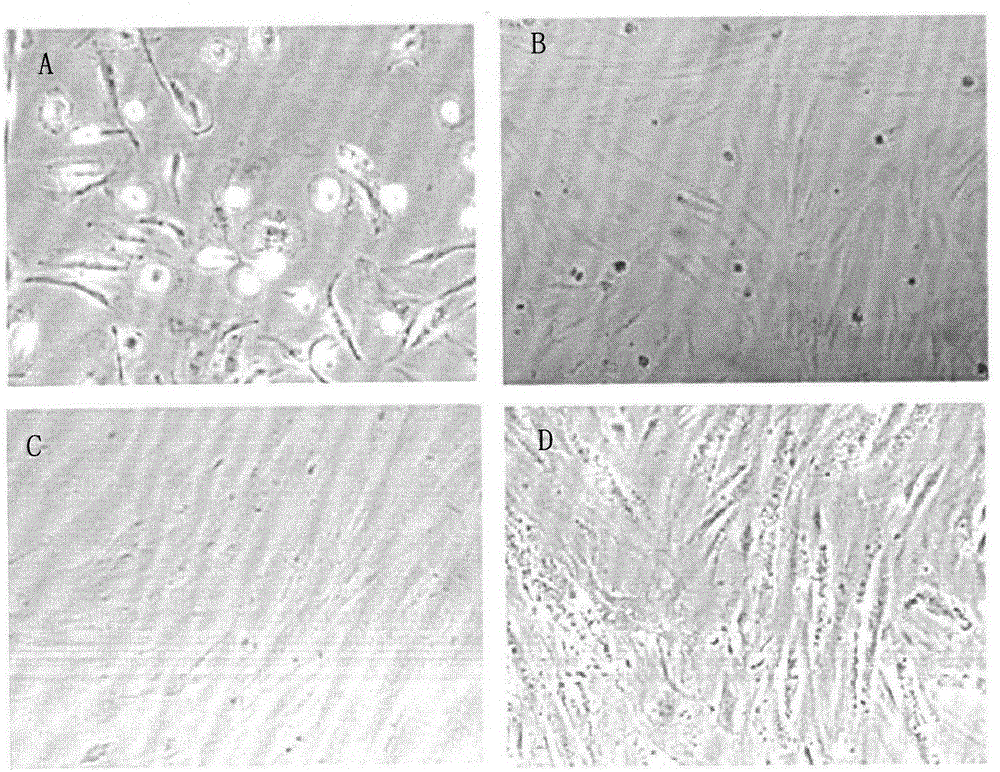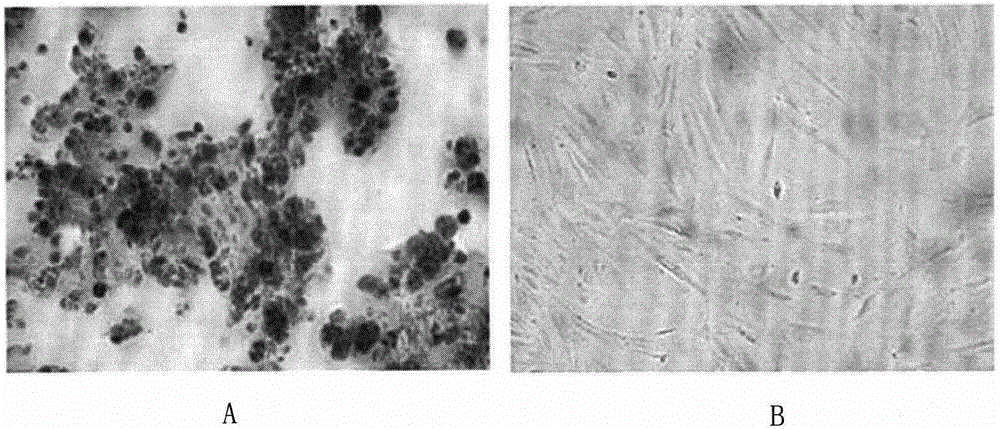Method for separating and purifying human embryo trophoblast and placental mesenchymal stem cells
A technology for nourishing cells and stem cells, applied in the field of biomedicine, can solve the problems of difficulty in obtaining large quantities and purity, complex placental cell components, etc., and achieve the effects of ideal cell purity and vitality, low cost, and small cell damage.
- Summary
- Abstract
- Description
- Claims
- Application Information
AI Technical Summary
Problems solved by technology
Method used
Image
Examples
Embodiment Construction
[0023] The technical scheme of the present invention will be described in further detail below in conjunction with specific tests carried out in the laboratory, but the present invention is not limited to the specific examples listed below.
[0024] A method for isolating and purifying human embryonic trophoblast cells and placental mesenchymal stem cells, comprising the following steps:
[0025] (1) Treatment of placenta specimens: Under aseptic conditions, remove the amnion from the delivered placenta, cut off the 2.5mm tissue on the maternal surface of the placenta, cut off the placenta leaflets, weigh 50g, and soak them in the preservation solution containing antibacterial peptides. The peptide preservation solution is prepared by adding 55 micrograms / ml polylysine to 55 micrograms / ml gallate EGCG. After soaking for a predetermined time, cut the cut placental leaflets with surgical scissors and wash with normal saline. Wash the blood stains repeatedly until the washing liq...
PUM
 Login to View More
Login to View More Abstract
Description
Claims
Application Information
 Login to View More
Login to View More - Generate Ideas
- Intellectual Property
- Life Sciences
- Materials
- Tech Scout
- Unparalleled Data Quality
- Higher Quality Content
- 60% Fewer Hallucinations
Browse by: Latest US Patents, China's latest patents, Technical Efficacy Thesaurus, Application Domain, Technology Topic, Popular Technical Reports.
© 2025 PatSnap. All rights reserved.Legal|Privacy policy|Modern Slavery Act Transparency Statement|Sitemap|About US| Contact US: help@patsnap.com



